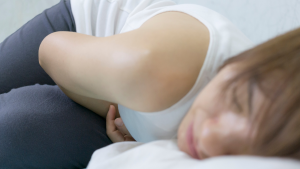Women may experience more pain than men, but receive less treatment for it

That men and women are different has been discussed since Adam and Eve. That they experience and cope with pain differently has been consistently described in research studies.
In patients with cancer, another study found that women were more likely to be undertreated for their pain.
An online survey of more than 2,400 women with chronic pain conducted by the National Pain Report, a chronic pain awareness organization, found more than 90 percent of those who responded felt the health care system discriminates against female patients. In addition, 49 percent felt doctors were less inclined to prescribe an opioid pain medication to them because they are female.
Why are women treated differently?
Women are more likely to be treated “less aggressively” for their pain symptoms, and have them characterized as emotional or psychological in nature.Indeed, an inherent bias appears to exist in the medical treatment of women who experience pain where they are considered to be more emotional, than actually suffering from pain. For example, in one study that examined patients after surgery, women complaining of pain were more likely than men to be given sedatives rather than painkillers.
Self-advocacy
Unfortunately, women tend to wait longer to seek help for their pain and many prefer to suffer in silence. However, the power of self-help cannot be understated. Women should feel empowered to speak out and seek the help and treatment they need for their pain.
Self-advocacy in health care entails learning to obtain pertinent information and to self-assess your health-related strengths, weaknesses and the goals you wish to achieve. It requires you to communicate these effectively and to negotiate and assert your needs.
Understanding that you do not need to live in pain and researching the many options in pain management that may be open to you are key. Seeking help early from specialists in pain medicine can be instrumental.
Read more on KevinMD Blog
Women may experience more pain than men, but receive less treatment for it

C’est vrai de Virisens, à Genève, qui rappel cet automne une chasse premium – design expurgé.